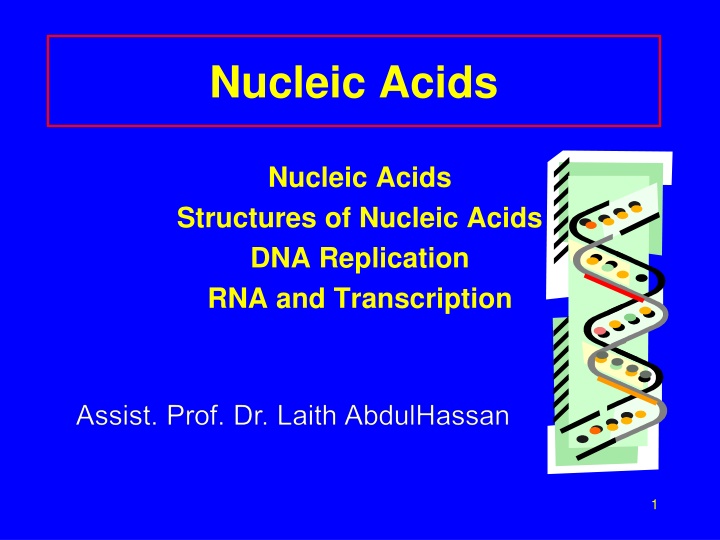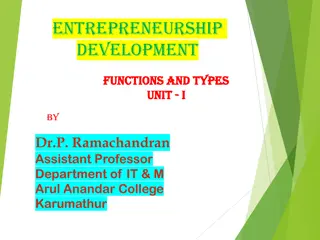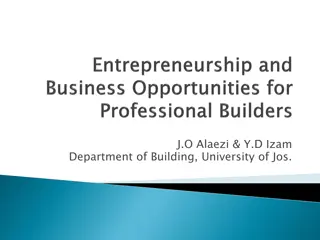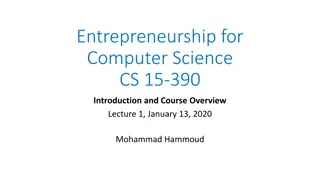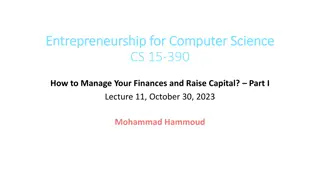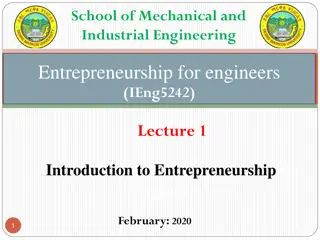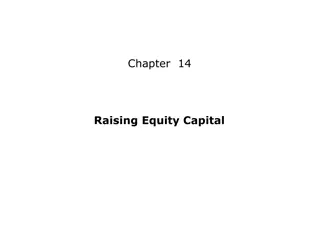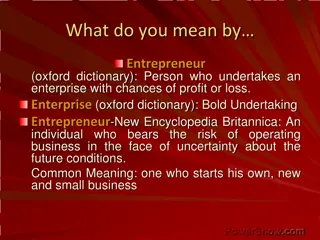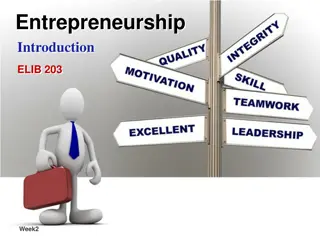Managing Finances and Raising Capital in Entrepreneurship
Lifetime Value of an Acquired Customer (LTV) is crucial for understanding customer profitability in business. It represents the expected gross profit from a customer over their entire relationship with the company. Knowing how to calculate LTV and compare it against Cost of Customer Acquisition (COCA) can help in strategic decision-making and business sustainability. Key inputs such as revenue streams, gross margin, and retention rate play a vital role in determining LTV. This lecture dives into Unit Economics, focusing on LTV and COCA to equip students with essential financial management skills for entrepreneurial success.
Uploaded on Apr 13, 2025 | 0 Views
Download Presentation

Please find below an Image/Link to download the presentation.
The content on the website is provided AS IS for your information and personal use only. It may not be sold, licensed, or shared on other websites without obtaining consent from the author.If you encounter any issues during the download, it is possible that the publisher has removed the file from their server.
You are allowed to download the files provided on this website for personal or commercial use, subject to the condition that they are used lawfully. All files are the property of their respective owners.
The content on the website is provided AS IS for your information and personal use only. It may not be sold, licensed, or shared on other websites without obtaining consent from the author.
E N D
Presentation Transcript
Nucleic Acids Nucleic Acids Structures of Nucleic Acids DNA Replication RNA and Transcription 1
Nucleotides Nucleic acids consist of nucleotides that have a sugar, nitrogen base, and phosphate Base PO4 Sugar nucleoside 2
Nitrogen-Containing Bases O NH2 H CH3 N N N O N H N H N adenine (A) thymine (T) O NH2 O H CH3 H CH3 N N N N N H NH2 N O N H O N H guanine (G) cytosine (C) uracil (U) 3
Sugars O O HO HO CH2 CH2 OH OH (no O) OH OH OH ribose deoxyribose 4
Nucleosides in DNA Base Adenine (A) Guanine (G) Cytosine (C) Thymine (T) Sugar Deoxyribose Deoxyribose Deoxyribose Deoxyribose Nucleoside Adenosine Guanosine Cytidine Thymidine 5
Nucleosides in RNA Base Adenine (A) Guanine (G) Cytosine (C) Uracil (U) Sugar ribose ribose ribose ribose Nucleoside Adenosine Guanosine Cytidine Uridine 6
Example of a Nucleoside NH2 N O O N O- P O- O CH2 O OH deoxyctyidine monophosphate (dCMP) 7
Nucleotides in DNA and RNA DNA dAMP dGMP dCMP dTMP Deoxyadenosine monophosphate Deoxyguanosine monophosphate Deoxycytidine monophosphate Deoxythymidine monophosphate RNA AMP GMP CMP UMP adenosine monophosphate guanosine monophosphate cytidine monophosphate uridine monophosphate 8
Structure of Nucleic Acids Polymers of four nucleotides Linked by alternating sugar-phosphate bonds RNA: ribose and A, G, C, U DNA: deoxyribose and A,G,C,T base base base base P P sugar sugar sugar sugar P P nucleotide nucleotide nucleotide nucleotide 9
Nucleic Acid Structure NH2 N CMP O O N O- P O- O CH2 O 3 NH2 3,5-phosphodiester bond OH N N 5 N O N O P O- O CH2 O AMP 10 OH
Double Helix of DNA DNA contains two strands of nucleotides H bonds hold the two strands in a double- helix structure A helix structure is like a spiral stair case Bases are always paired as A T and G-C Thus the bases along one strand complement the bases along the other 11
Complementary Base Pairs Two H bonds for A-T Three H bonds for G-C 12
Learning Check NA1 Write the complementary base sequence for the matching strand in the following DNA section: -A-G-T-C-C-A-A-T-G-C- 14
Solution NA1 Write the complementary base sequence for the matching strand in the following DNA section: -A-G-T-C-C-A-A-T-G-C- -T-C-A-G-G-T-T-A-C-G- 15
DNA Replication DNA in the chromosomes replicates itself every cell division Maintains correct genetic information Two strands of DNA unwind Each strand acts like a template New bases pair with their complementary base Two double helixes form that are copies of original DNA 16
DNA Unwinds G- A- C- T- -C -T -G -A G-C A-T C-G T-A 17
DNA Copied with Base Pairs Two copies of original DNA strand G-C A-T C-G T-A G-C A-T C-G G-A 18
